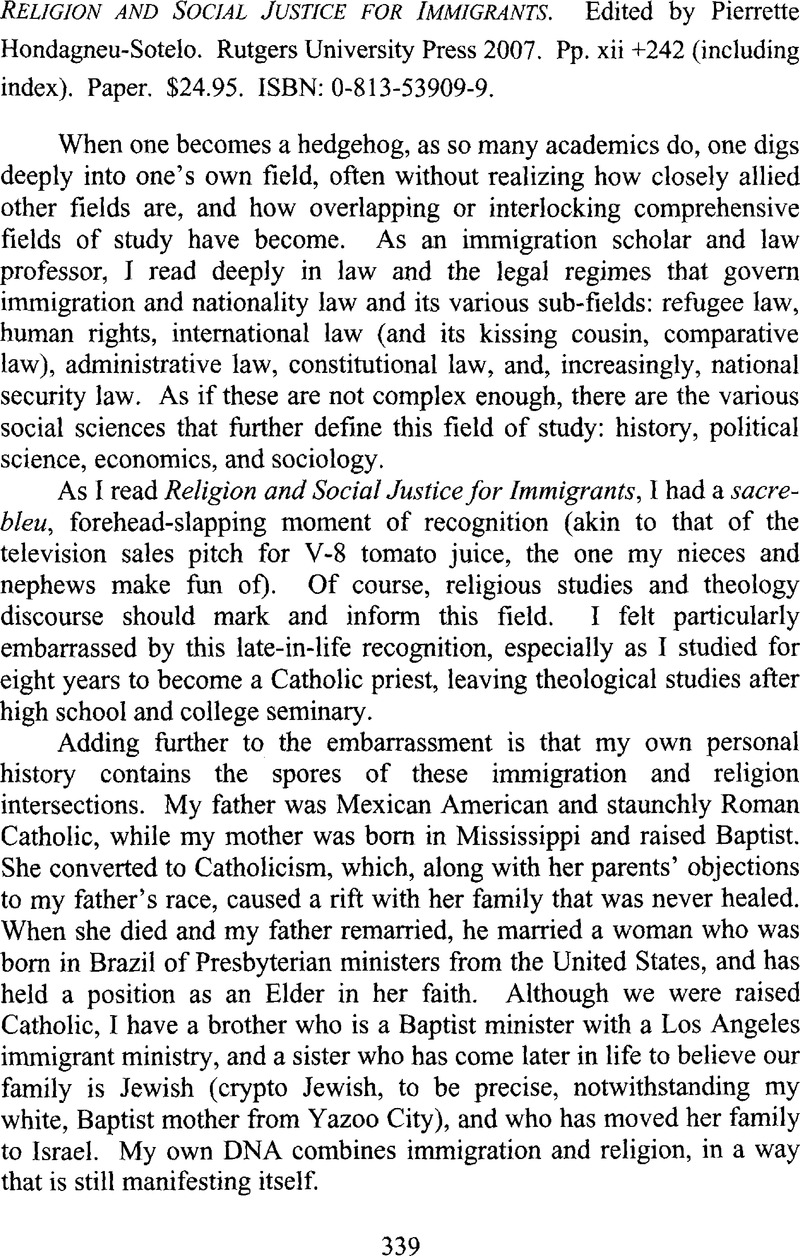No CrossRef data available.
Published online by Cambridge University Press: 24 April 2015

1. See e.g. Global City Migration Map, http://migrationinformation.org/datahub/gcmm.cfm#map4 (accessed Apr. 15, 2008) (showing no U.S. metropolitan area with 50%). When classified by the share of foreign born in the total state population, the top 10 counties in 2006 were Miami-Dade County, Florida (50.3%); Queens County, New York (48.5%); Hudson County, New Jersey (40.5%); Kings County, New York (37.8%); Santa Clara County, California (36.4%); San Francisco County, California (36.3%); Los Angeles County, California (35.4%); Imperial County, California (32.6%); San Mateo County, California (32.1%); and Bronx County, New York (31.8%). Id.
2. See e.g. Refugee Arrivals by State of Residence, 2006, Fig. 4, http://www.migrationinformation.org/USFocus/display.cfm?ID=664#10 (showing U.S. refugee and asylum figures) (accessed June 9, 2008). The 2006 data showed substantial declines from recent figures. Id. at Table 2.
3. 2006 Yearbook of Immigration Statistics, Table 6, cited at Aleinikoff, T. Alexander, Martin, David A., Motomura, Hiroshi & Fullerton, Maryellen, Immigration and Citizenship, Process and Policy 307 (6th ed., Thomson-West 2008)Google Scholar.
4. For a recent story on Guadalupana art, see Kuusinen, Asta, Ojo de la Diosa: Becoming Divine in Delilah Montoya's Art Photography, 33 Aztlán: J. Chicano Stud. 33 (2008)Google Scholar. For a small sampling of books and articles, in English and in Spanish, on the Virgin of Guadalupe, see Brading, D.A., Mexican Phoenix, Our Lady of Guadalupe: Image and Tradition Across Five Centuries (Cambridge U. Press 2001)Google Scholar; Rosado, Jose L. Guerrero, Los Dos Mundos de un Indio Santo (Ediciones Cimiento 1991)Google Scholar; Herszenhorn, David M., Mexicans Unite to Honor Their Spiritual Mother A51 N.Y. Times (12 13, 1998)Google Scholar; Elizondo, Virgil, Guadalupe, Mother of a New Creation (Orbis Books 1997)Google Scholar; Lafaye, Jacques, Quetzalcoatl and Guadalupe, The Formation of Mexican National Consciousness, 1531-1813 (U. Chi. Press 1976)Google Scholar; Matovina, Timothy, Guadalupe and Her Faithful: Latino Catholics in San Antonio, from Colonial Origins to the Present (Johns Hopkins U. Press 2005)Google Scholar; Poole, Stafford, Our Lady of Guadalupe: The Origins and Sources of a Mexican National Symbol, 1531-1797 (U. Ariz. Press 1997)Google Scholar; The Story of Guadalupe: Luis Laso de la Vega's Huei Tlamahuicoltica of 1649 (Sousa, Lisaet al., eds., Stanford U. Press 1998)Google Scholar; Ernesto de la Torre Villar y Ramiro Navarro de Anda, Testimonios Históricos Guadalupanos (Fondo de Cultura Económica 1982)Google Scholar.